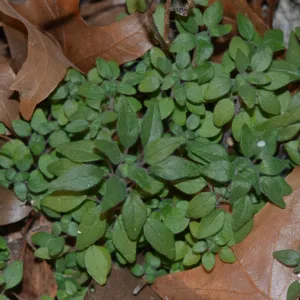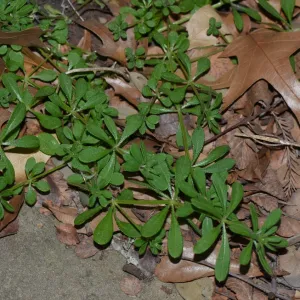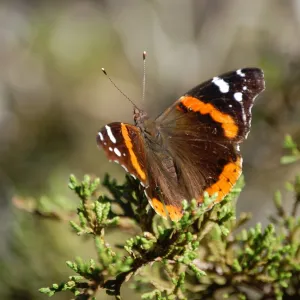By Delmar Cain – Boerne Chapter, Native Plant Society of Texas
Published in the Boerne Star on January 31, 2014.
The golf courses in our area will not see much activity today other than at their bars and grills. It was 24 degrees Fahrenheit with wind chills into the teens. The light precipitation in the night turned into ice on exposed rocks and the driveway. The coffee pot will get additional work today and there are not enough landing spots on the birdfeeders for the number of birds.
Before this Texas change in the weather the temperature was in the 70’s and I noticed a few plants growing that usually get mentioned on plant field trips. On one of my first trips in Boerne Bill Carr, who at the time was a botanist for the Nature Conservancy, let everyone take a leaf off a small plant and chew on it. It tasted like a slice of cucumber.

Pennsylvania cucumber plant or Cucumberweed (Parietaria pensylvanica), an annual herb, is probably growing somewhere in your yard. It most certainly will be growing in every park or nature area in the Hill Country. According to the USDA Plant Database it has been documented in every state except Delaware, Alaska, Hawaii and Puerto Rico and in most regions of Canada. In Texas it has been documented from Hemphill County in North Texas to Cameron County in South Texas and from Marion County in East Texas to Hudspeth County in West Texas.
In many states this small plant may be listed as a weed and tagged with being invasive. But the compilers of some of those lists also list coreopsis as a weed and think that coastal burmuda is a godsend. If the only thing that you care to raise on your 4 acres is one horse, coastal burmuda may win out over coreopsis. As my mother would say, “To each his own, said the maid as she kissed the cow.” I appreciate any native plant that can grow in the small crevices of limestone. That Cucumberweed may help break a fall when I get older. But for sure it is a member of a family group that contains host plants for one of my favorite butterflies, the Red Admiral.
Parietaria pensylvanica is in the Nettle Family, which includes another plant, Stinging nettle or Heartleaf nettle (Urtica chamaedryoides). I noted in a past article that humans have been using some members in the Nettle Family, like Heartleaf nettle, as a food source for hundreds of years. I don’t know if Pennsylvania cucumber plant is edible in bulk, but tasting one leaf certainly makes one think cucumber. The Red Admiral prefers salads.
I hope to find out more information about what’s good to eat at the February 4, 2014 meeting of the Boerne Chapter of the Native Plant Society of Texas at the Cibolo Nature Center. Xanthis Barthel, one of our members and a student at the Geneva School in Boerne, will give a presentation on edible plants of the Hill Country. Danesha Clarke, our President-elect, will have additional comments about the health benefits of some of our native plants. The program starts at 7:00 PM, but the social time starts at 6:30 PM. The public is invited.

Another plant that seems to be surviving the cold has several humorous but descriptive common names. Catchweed bedstraw, Cleavers, and Stickywilly are just some of the names for Galium aparine, a member of the Madder Family. Bill Carr referred to it as Clingon Bedstraw. As the common names of this plant imply, it will attach to and take a ride on your clothes.
Stickywilly has been very successful at hitching rides. In the United States it can be found in every state except Hawaii. It is even found in Alaska. The temperatures we are having in Texas are not about to slow it down.
Stickywilly is an annual vine that can be found growing on and among bushes and thickets. It has bristles on its stems and leaves. The bristles are curved and attach like Velcro to clothes and to fur. A small white flower will bloom in April from a whorl of leaves that will grow on an axil around the stem as the vine gets longer. The Wildflower Center indicates that because of the “pleasant smelling foliage” of one related species, Galium verum, which was used to stuff mattresses in medieval times, this group of plants acquired the label of Bedstraws.

The mattresses at our house have sufficient stuffing. Even so, weed label and all, I don’t intend to diligently pursue the Stickywilly with a hoe or weedeater.
Limestone rocks are even more attractive with a bit of green. Also, I would be shocked if there weren’t some creatures which we don’t know about that find great delight in happening upon a good stand of Stickywilly. And we know how the Red Admiral has voted.
